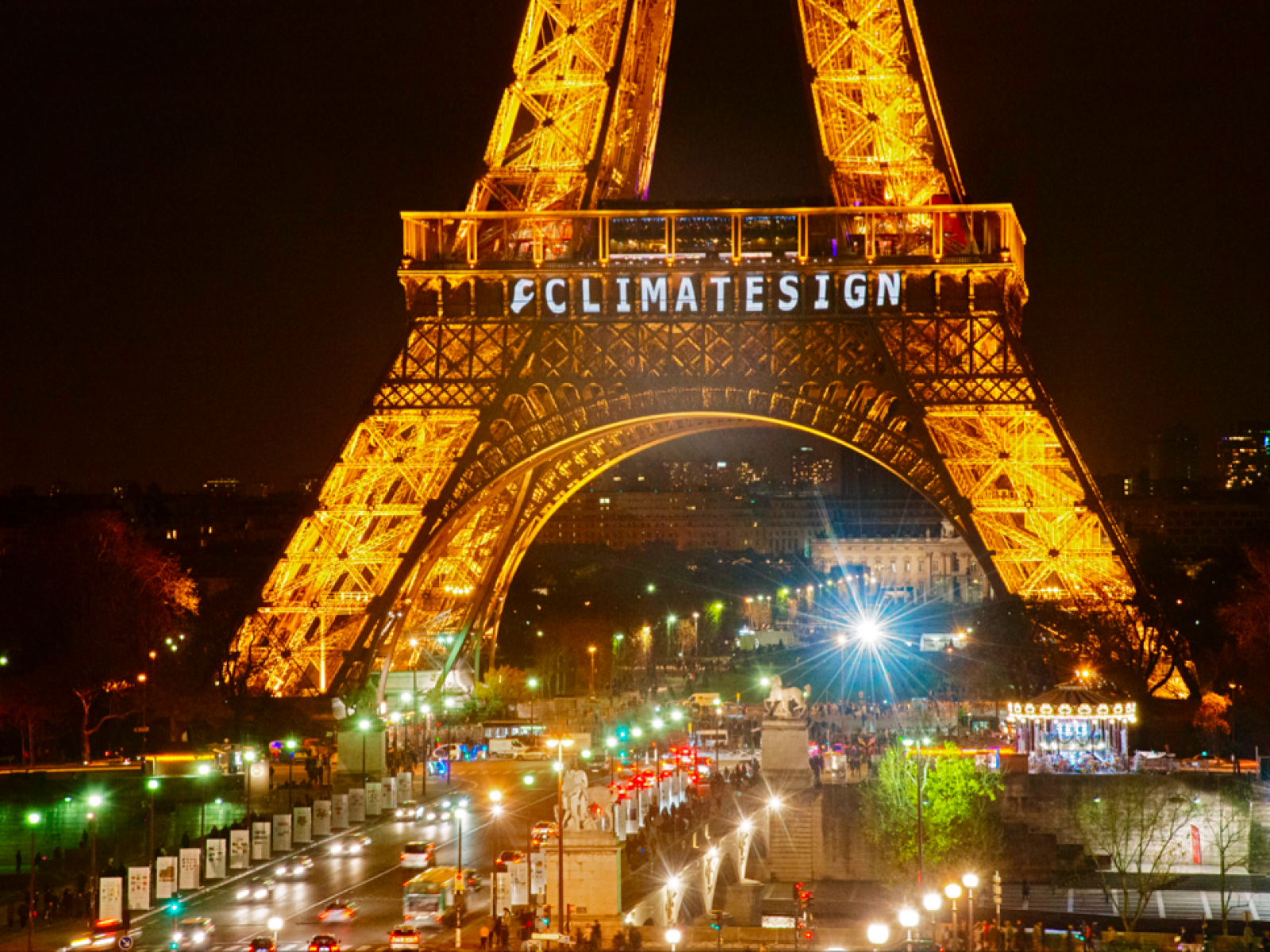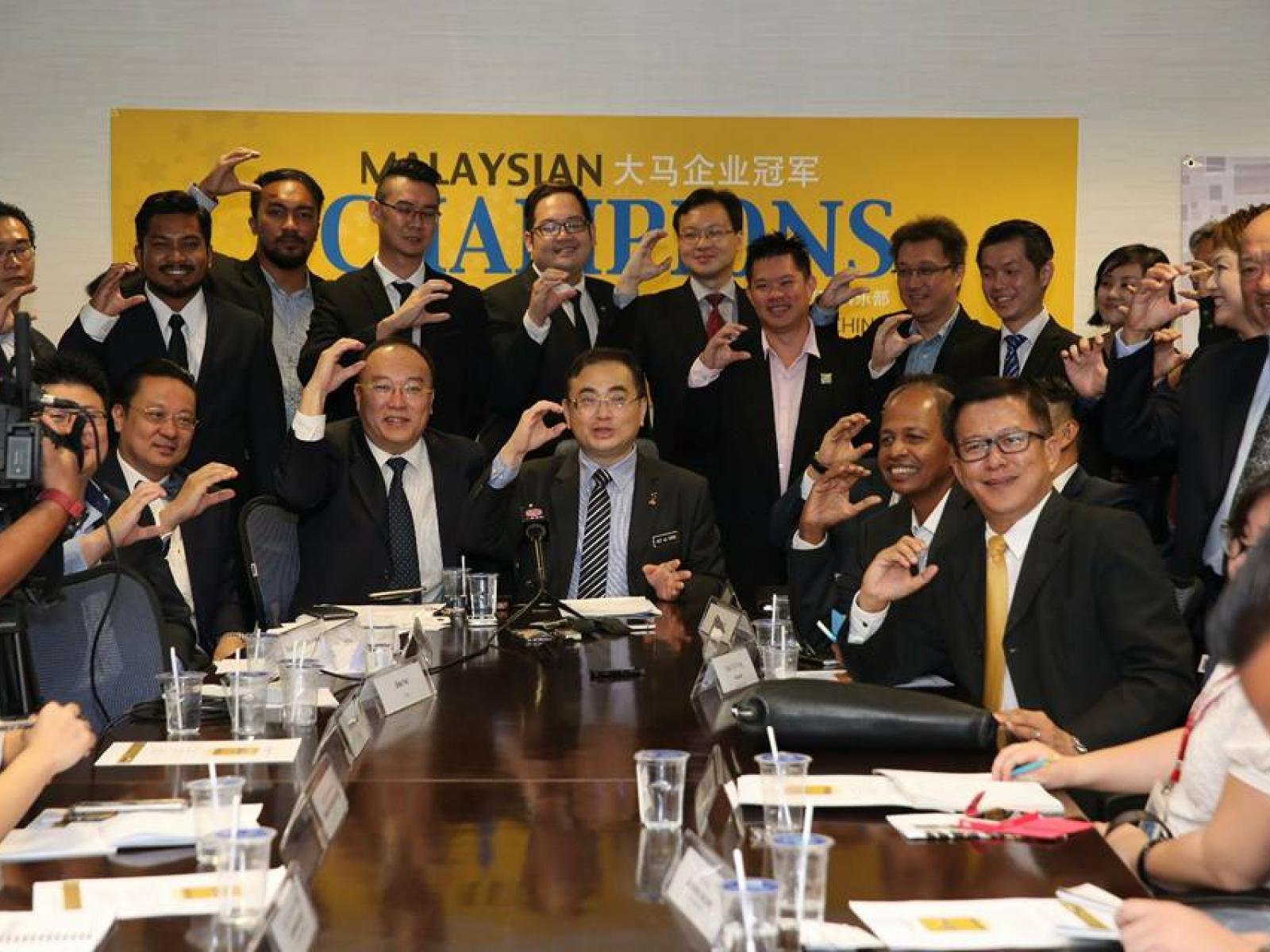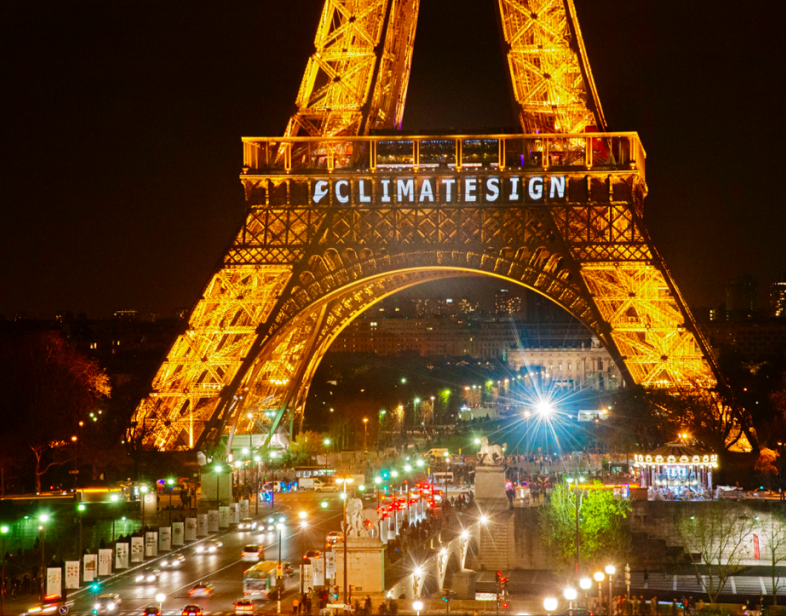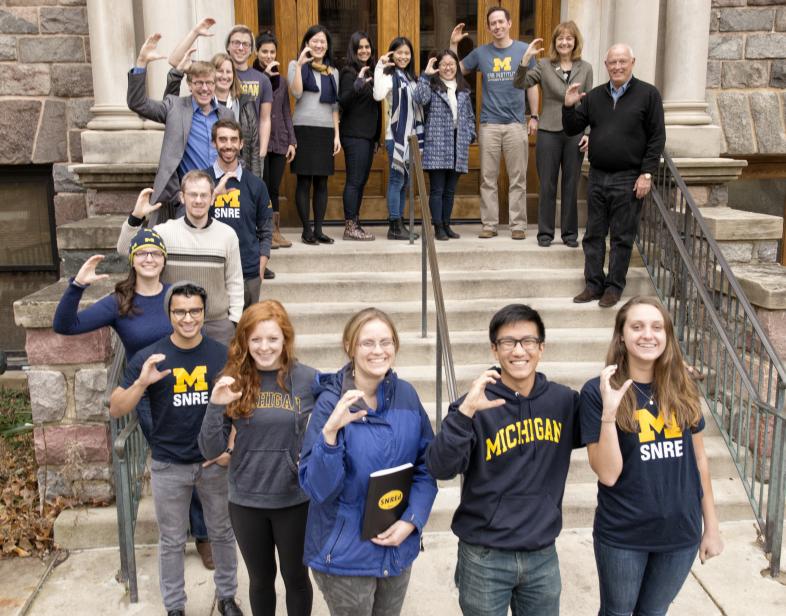An Overview Of Our Solution
We are experiencing a tragedy of the commons challenge with climate change. Everyone collectively contributes to climate change, but it is difficult for them to feel as though they can make a difference in addressing such a large problem. Addressing this problem will require global collaboration, but starts at the local level with systematic behavior change. Most people believe in climate change, but because of the denialism injected into the conversation, it can feel hopeless. The Climate Sign is a hand sign and image that unites people for climate action around the world, and encourages them to take action no matter who they are or where they live. We use social interventions and emotional appeals to get people to participate in the larger conversation, and to act on solutions because of their social responsibility to their community at large.
- Population Impacted: 210,000,000
- Continent: North America
Context Analysis
According to the Yale Program on Climate Communication, 70% of Americans believe in climate change and Wall Street Journal/NBC News polls indicate that 60% of Americans want the government to take action on climate change. However, in many parts of the country, political will for climate action is lacking. Denying climate change has become synonymous with certain political platforms because leaders of those groups have spoken out against the reality of climate change. This makes it difficult for the country to discuss what to do about it. Because people have identified climate change as a touchy subject, they have begun to “self-silence,” which has led to “pluralistic ignorance,” according to Nathaniel Geiger & Janet Swim of Penn State University. This means that many people do not have an understanding of what the problem is, or have the tools to address it because they are not talking about it. Long-term systematic change if people cannot engage with the issue at hand.
Describe the technical solution you wanted the target audience to adopt
Movements have symbols and imagery to allow people to connect with one another and support a particular issue and stance. It can be used no matter who you are, what language you speak, or where you are located in the world. The Climate Sign is that for the climate movement. Like the Peace Sign, an image and a hand sign, the Climate Sign unites people together around the world for climate action. Non-profit organizations, businesses, world leaders, and individuals use the sign to show where they stand on sustained action to mitigate and adapt to climate change, which is to address it now and as quickly as possible. The Climate Sign is personal indicator that each of us is ready and able to address our shared challenge. Our primary audience to launch the Climate Sign has been youth because they are early adopters of new initiatives and they have tremendous reach in many different communities. They also have the most to lose if climate change is not addressed soon.
Type of intervention
Describe your behavioral intervention
The Climate Sign addresses apathy to climate change in the general population. We want everyone, citizens, politicians, businesses, and organizations to use the Climate Sign in order to derive the political will we need to take significant action. If everyday people are engaged in the conversation it becomes easier for everyone to work on the issue because there is a broad community of support. Symbols validate people, and give them a way to belong (Butz, 787-788). We want people to talk more about the problem, solutions, and share their stories of how they are being impacted, which is not currently happening at the rate it needs to be. We have ensured consumer adoption of the Climate Sign by connecting with other well established environmental groups and grassroots organizations in order to utilize their existing networks. Additionally we are viewing this as a marketing opportunity to get more people bought in and emotionally attached to the conversations. We want people to feel good about the product we are selling, which is uniting for climate action, and with that we use positive messaging to empower people to get involved with the vision we see. Finally, young people are our target audience as they are the most likely to adopt a tool like this and engage with us on social media.
Butz, David A. “National Symbols as Agents of Psychological and Social Change.” Political Psychology, vol. 30, no. 5, 2009, pp. 779–804. JSTOR, JSTOR, www.jstor.org/stable/41502459.
As needed, please explain the type of intervention in more detail
The Climate Sign appeals to two types of interventions, which are social incentives and emotional appeals. By getting individuals to show their support for climate action through a hand sign and an image the social incentive is for others to also participate and use the Climate Sign to show their support as well. It allows people to join a community and immediately identify themselves with that community, which can help create a sense of mass acceptance of the need to address climate change. The Climate Sign also has emotional appeals because it makes individuals feel like they are important to the conversation, impacting a larger challenge, and their opinions are being elevated with an elegant hand sign and image.
Describe your implementation
Ultimately, addressing climate change is a marketing problem. We need people to buy into the idea that coming up with solutions to climate change is the socially responsible thing to do. All social movements need recognizable symbols and ways to spread their message and connect people with an overarching brand. The Climate Sign is an invitation to participate in this social movement and get involved in local climate solutions. The Climate Sign spreads an inherently political message, in an incredibly apolitical manner; following the likes of the Peace Sign. In order to ensure the Climate Sign is adopted, promoted, and changing behavior we use a top down and bottom up approach. For top down, we have access to spaces that allow us to get high level leaders and celebrities to use their platforms to catalyze others. This is primarily to gain exposure and acceptance of the Climate Sign. When it comes to bottom up, we work with young people who are implementing climate change solutions in their communities, and provide them with international recognition to showcase their solutions to get others involved. The conditions that enable us are that we live in a world dominated by social brands via social media, in this political climate people are willing to display their beliefs, and we also have access to high level conversations about these issues. We send delegations to the UN Climate Conferences, and are members of Climate Action Network (CAN) International, USCAN, and the Powershift Network. To see success we want to engage at least 210 million people, or a tenth of Facebook’s usership, in using the Climate Sign, and encourage at least 10% of Climate Sign users to build climate solutions in their communities. We want to become a household name, and have the Climate Sign be internationally recognized. The primary obstacle we have faced is gaining recognition and traction. We are overcoming this by using our networks and social media tools to break into new markets.
External connections
The Climate Sign was originally created by an international group of young people from various demographics and regions. From there we knew we wanted this effort to be supported by a coalition of organizations, and not just a pet project of one. To launch the Climate Sign, we worked with number of domestic and international organizations and entities such as 350.org, NRDC, Human Energy, the City of Paris, and Citizens’ Climate Lobby to illuminate the Climate Sign hand sign on the Eiffel Tower during COP21. Since then, we have built deeper relationships with the sustaining coalition, which in addition to the groups above include Green Sports Alliance International, Zero Hour, iMatter Youth, Power Shift Malaysia, the St. Louis Zoo, Baltimore Aquarium, Climate Central, Sierra Club, and others. Internationally, we also work within the UNFCCC’s Youth constituency (YOUNGO).We urge youth delegates to the UN climate talks to advocate for environmentally sustainable policies to be included in the Paris rulebook, stage direct actions, host press conferences, have bilateral meetings with UN negotiators, share communication strategies, and spread the Climate Sign in visible ways. We have promoted domestic and international dialogue through our Online Youth Exchange program. This program has three separate goals: to connect youth across borders, learn through collaboration, and act with broad support. They use the Climate Sign to connect their work to the larger conversation.
Who adopted the desired behaviors and to what degree?
Internationally, our first major success was getting the Climate Sign illuminated on the Eiffel tower during COP21, which helped inspire the city and the world to come to an international agreement. Immediately after Paris, we launched a Sign the Agreement Campaign to get people to “sign” the Paris Agreement in solidarity with world leaders, which engaged over a million people online. Nationally, this past month Zero Hour youth marches and lobby days incorporated the Climate Sign to unite the movement as they demanded action on climate change. On the local level, in order to engage a new and different population, we have partnered with the St. Louis Zoo, which now incorporates the Climate Sign in employee education and special events to engage visitors to discuss what they can do to help. Finally, celebrities such as Akon, Allison Sudal, Al Gore, and Jane Goodall have also used Climate Sign, which helps engage new audiences that follow them.
How did you impact natural resource use and greenhouse gas emissions?
The Climate Sign gives activists a tool to engage others in their influential work. For example, in Pakistan, Abdul has been managing a Break Free from Plastic campaign in an effort to reduce local waste, and the Climate Sign has been a key element in his presentations. Emily, from New Zealand, was a delegate to the UN climate talks. As a member of the agricultural working group, she used the Climate Sign to build relationships with negotiators by publicly showing they were in support of climate action. She advocated for references to animal agriculture to be made in international policy, which has been left out of the conversation. If implemented in the Paris Rulebook, countries would have to make commitments to emission reductions in this sector. Finally, in Phoenix, AZ, Tammy attends farmers markets to teach people about how eating local food can lower emissions, and gets them to take a photo pledge. As the sign continues to gain exposure, it continue to get more people involved.
What were some of the resulting co-benefits?
Our work has been centered on promoting international youth leadership to take climate action. These leaders have come to us seeking mentorship, marketing support for their programs, and connection to the global community that is addressing climate change. Our engagement with them has resulted in beach cleanups, community recycling efforts, renewable energy initiatives, encouragement towards local and plant based food, creating walkable and bikeable cities, and forest protection. These efforts allow for young people invested in and elevated in their communities and creates environments where future generations can live and thrive. Additionally, by reducing waste and cleaning it up, this helps with serious waste management that large cities in developing countries are facing. This has been helpful in Kampala, Uganda and Lagos, Nigeria.
Sustainability
Once our solution succeeds, it will be impossible to lose the impact it has had.Think of the peace sign or the pride flag, a global symbol for cooperation, love, and world peace. We take its true meaning for granted often, but everytime it is used, a profound statement is made. We want the same for the Climate Sign, for it to be used as a call to action to act on climate change. We are reliant on grant funding because we have to create opportunities where we can give the sign more exposure. We are building a coalition of partners that we hope in the long run will provide financial assistance to communication campaigns to have the outreach we need once the Climate Sign is established.
Return on investment
In the past four years we have used $40,000 and have been able to accomplish everything outlined in this application. Because the Climate Sign is promoted and marketed through networks it becomes more of a matter of getting it into the right hands then spending money. Most of the money that has been spent has been in support of travel to make these connections and sending materials to coalition partners and activists to help supplement their projects with the Climate Sign. We have reached millions of people without efforts, and in order to get it to stick we need irritative interactions, which is what we focus on. We use the tools we have already available to have the greatest impact.
How could we successfully replicate this solution elsewhere?
We make our programs replicable and manageable so that they are sustainable. The Climate Sign is an open-source image. All one has to do to spread a hand sign or symbol, is use it themselves and encourage others to use it in order to unite for climate action. This has been done before with the peace sign, human rights equals sign, recycling symbol, and pride flag. One way we would ensure that our solution is replicated elsewhere, is by utilizing the tactics we previously mentioned in the “implementation” section. The funding that is required to realistically make this successful is about $500,000 each year to hire three staff: a director, digital media strategist, and program manager; and to have enough resources to market the Climate Sign effectively. We also plan on expanding the coalition and to get members to implement the Climate Sign in their programming in more substantial ways.





